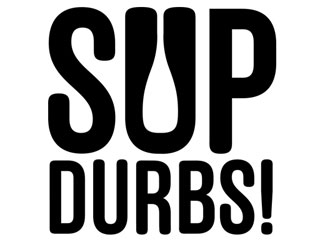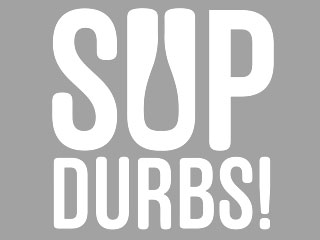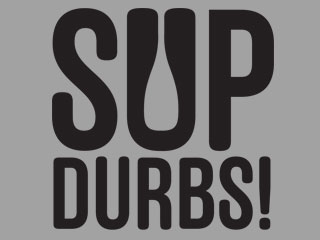Surf
SUP Surfing
Surf Etiquette
(Taken from TOWER SUP website) If you’re planning on venturing out into the surf on your stand up paddle board (which is highly recommended – you’ll have a blast and likely it will be a transforming experience), it is imperative to understand that you are joining the surfing community. Unless you are a seasoned surfer, it is imperative that you understand and respect the fact that you are not only a newcomer (like any new surfer), but that you are a newcomer on a new type of board. It is imperative that you educate yourself on surf etiquette. Don’t be one of the oblivious SUPers that give the sport a bad rep with the surfing community. In this community, the motto is you need to give respect to get respect.
I repeat... Don’t be one of the oblivious SUPers!
Surf Etiquette This below is an abstract of a more comprehensive bill of rights and lefts that is the original work of Surfline and Surfology. Click here for the full piece on surf etiquette.
Pick the right spot for your level Pretty straightforward. If you’re a beginner, learn to surf on the uncrowded breaks (which are worse of course). If you’re an advanced surfer, go where you’re skills can be utilized… and if you’re surfing in a beginner break don’t get agitated by the beginners as you’re in their “training ground”.
Don’t drop in or snake A reef break breaks first at a point called the peak and then breaks in a direction away from the peak (towards the “shoulder” of the wave). The best place to catch the wave is at the peak and then you get the longest ride. The surfer closest to the peak has the right of way. If you’re out on the shoulder of the wave and try to catch the same wave as someone who’s better positioned “inside” (closer to the peak than you) that stands up on the wave, then you’re said to be “dropping in” on them. The term snaking is a sort of exploitation of the “no dropping in rule”. It involves quickly moving inside (closer to the peak) a surfer that is about to catch a wave and dropping in. Thus it appears that you dropped in on them (instead of what really happened). Both are faux paus. The take away here is that you always need to look inside of you to see if there is a surfer better positioned who’s going after the same wave. If so, yield. And if you happen to inadvertently drop-in on someone, exit the wave quickly when you realize it and maybe even apologize to them later. Give respect to others and they’ll likely return the favor later.
Paddle out wide of the break Go way out on the shoulder of the wave, out of the way. For one, it’s easier to paddle outside of all of the turbulence, but the idea here is to avoid getting in the path of incoming surfers. If you happen to get caught inside the whitewater, ride out the set in the whitewater instead of paddling towards the shoulder during the set as you’ll get in the way. Ideally, you kind of surf in down the wave and naturally go out the shoulder of the wave. Then you paddle straight out (now wide of the break). Once you’re out past the breaking waves, you paddle across over to the back of the line-up (queue of surfers waiting for the next wave – with the front of the queue closest to the expected peak area).
Take turns Initially you need to assess if there is a line-up, and if so try to follow suit. Don’t just paddle out and jump the line-up and chase every wave. In some places there really isn’t any formal line-up that is perceivable, but you still kind of want to take turns. Surfing is meant to be a relaxed sport. There’s no hurry!
Assess the vibe Assess the feeling of the surfers in a particular location and follow suit or go elsewhere. If it’s a bunch of laid back surfers just having fun and not being that competitive, follow suit. If you’re on a highly sought after break with a bunch of competitive surfers who are competing to get as many waves as possible in, then pay attention and don’t miss waves when it’s your turn.
Always aid another surfer in trouble You got their back, they got your back. The environment of the ocean and the waves can be a dangerous place. You’ve usually only got each other.
Respect the locals This is where the whole notion of giving respect to get respect comes into play. If you’re a visitor or a newcomer to an area, respect and defer to the locals. If there are four locals surfing in a spot, don’t bring six of your friends out and take the place over. Be gracious and understand you’re a guest. Act as such.
Don’t use your surfing advantages to abuse other surfers This is the idea of that, “With great power comes great responsibility.” In surfing, there are varying advantages in terms of board length, local knowledge, surfing skill, age/experience, and physical size. Part of the ethos of surfing is that of a community. As such you need to be aware of your advantages, and then not use them to monopolize the waves. For example, if you have a long board don’t just camp out deeper than all of the short boarders and steal every wave because you can. Likewise, if you’re an experienced surfer don’t just snake every wave from the novices because you can. If they’re getting in your way, perhaps you should pick a spot that better matches your ability. If you’re surfing in an area flush with beginners, you have to give them their due and chance to catch waves too. This whole idea is imperative to avoid crowded surfing spots becoming competitive rat races with strained relations amongst the participants. Surfing is a laid back sport. Enjoy. Don’t create havoc.
Don’t throw your board You are supposed to keep a hold of your board and not let it dangle behind you 10 feet by your leash in the waves. It can be a danger to other surfers wildly swinging and bouncing around, and if the lease breaks it becomes an unpredictable surfboard shaped torpedo. Dangling your board off your leash increases the chance of a leash breaking. You need to be able to operate and keep your board with you in the surf. If you can’t, try smaller surf until your skills improve.
Be fun, have fun Have a positive, deliberately friendly attitude towards your fellow surfers. At the heart of it, you are like-minded individuals. Surfing is about relaxing, having fun, and enjoying the ocean.
For Surfers and SUP Surfers in general
Don’t hog the waves You have the ultimate long board, boat like even, that allows you to catch waves way outside of regular surfers. Don’t use this surfing advantage to hog the waves. Just let a set go by every now and then.
Stay out of the pack Unless you’re a highly skilled surfer and waterman in general, you shouldn’t be stand up paddle boarding in the busy, popular surf breaks at all. Even in the less crowded breaks, it’s best to stay clear of the pack. SUP surf on the fringes – you can catch anything anyways.








